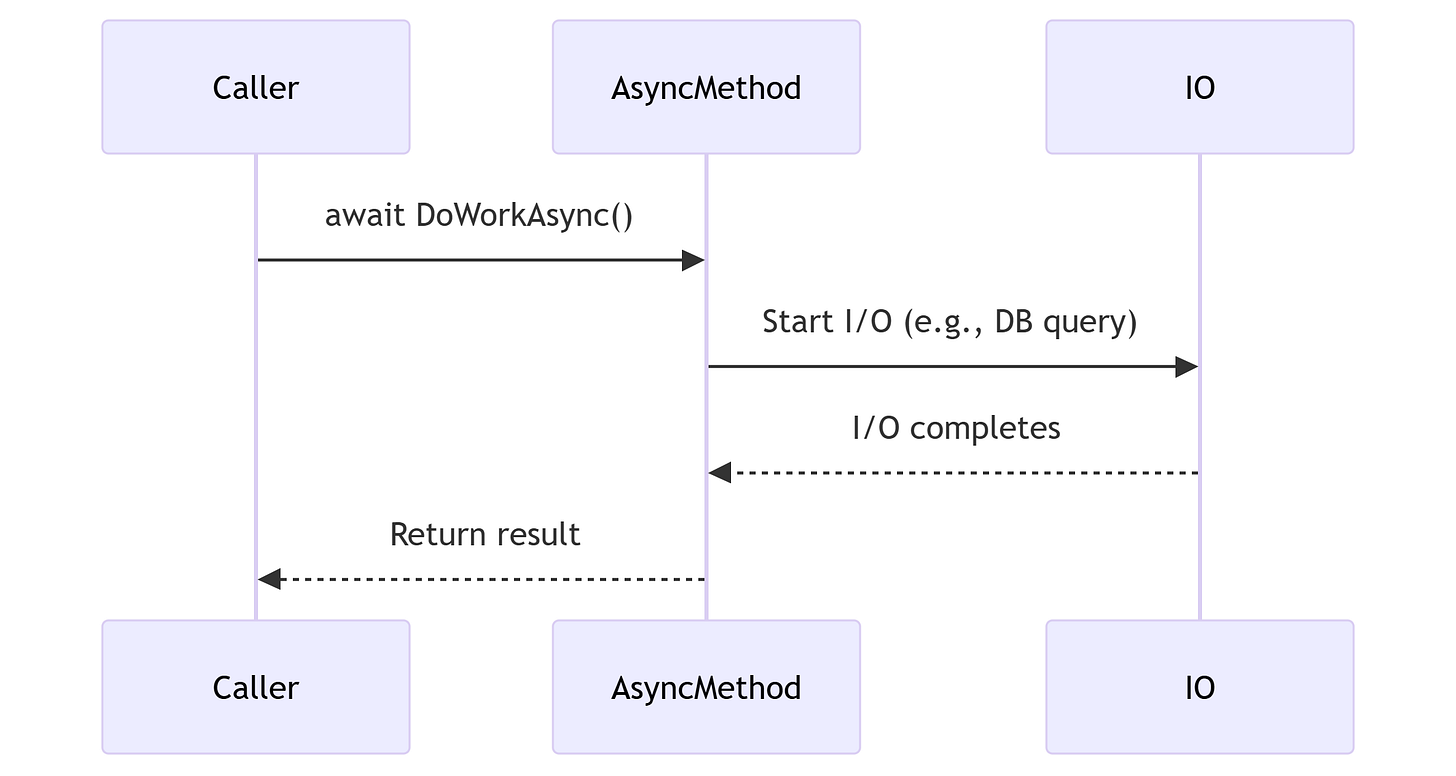Async/Await in C#: Patterns, Pitfalls, and Performance
Introduction to Async/Await
Async/await is a C# language feature that simplifies writing non-blocking code. It allows methods to yield control while waiting for long-running operations (I/O, network calls) without blocking threads.
Key Benefits
✔ Improved Responsiveness (UI stays interactive)
✔ Better Scalability (servers handle more concurrent requests)
✔ Simplified Code (avoids callback hell)
1. How Async/Await Works
Execution Flow
Under the Hood
The compiler transforms
asyncmethods into state machinesawaitpoints become potential suspension/resume locationsThe .NET thread pool manages continuations
2. Common Async/Await Patterns
Basic Usage
Parallel Execution
3. Critical Anti-Patterns
❌ Blocking Async Code
✅ Solution:
❌ Async Void
✅ Solution:
❌ Ignoring Tasks
✅ Solution:
4. Performance Considerations
Thread Pool Starvation
✅ Fix:
Use
ConfigureAwait(false)in library code
Avoid excessive parallel tasks
Use
ValueTaskfor hot paths
Task Allocation Overhead
5. Advanced Patterns
Cancellation
Timeout Pattern
6. Debugging Async Code
Common Issues
SymptomLikely CauseDeadlocksBlocking on async code (.Result, .Wait)Silent failuresUnobserved Task exceptionsHigh memoryUnbounded Task creation
Tools
Visual Studio Parallel Stacks (Debug > Windows)
Async Diagnostics (
Microsoft.VisualStudio.Threading.Analyzers)Dump Analysis (
!dumpasyncin WinDbg)
7. Best Practices Checklist
✅ Do:
Use
async/awaitall the way up call stackPrefer
Taskovervoidfor async methodsUse
ConfigureAwait(false)in library codeHandle cancellation properly
Log unobserved exceptions
❌ Don't:
Block async code with
.Result/.Wait()Ignore returned
TaskobjectsUse
async voidexcept event handlersMix sync/async without careful consideration
Conclusion
Async/await revolutionized .NET performance but requires discipline:
✔ Understand the state machine magic
✔ Avoid blocking calls at all costs
✔ Handle errors and cancellation
✔ Monitor thread pool health
Tip: Use ValueTask for frequently-called methods that often complete synchronously.

















